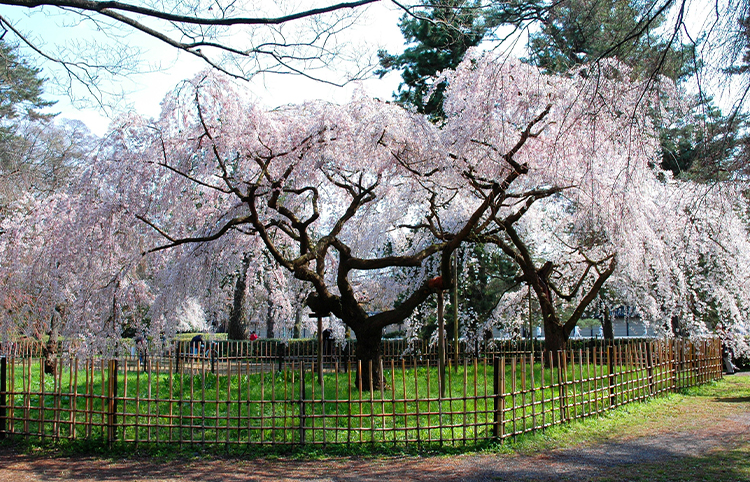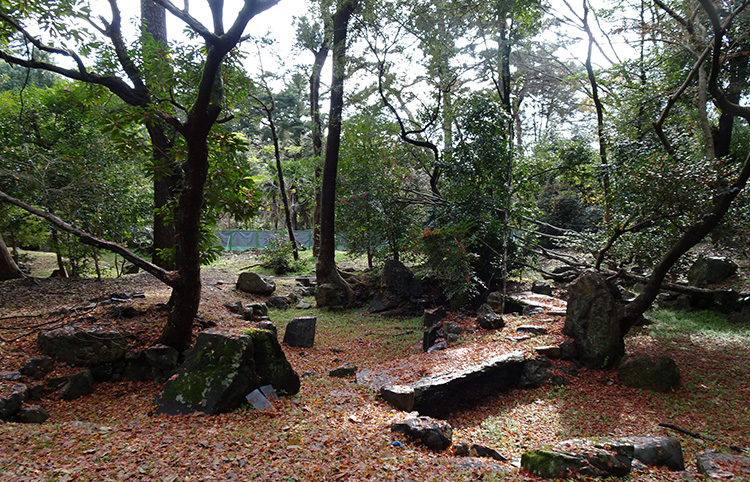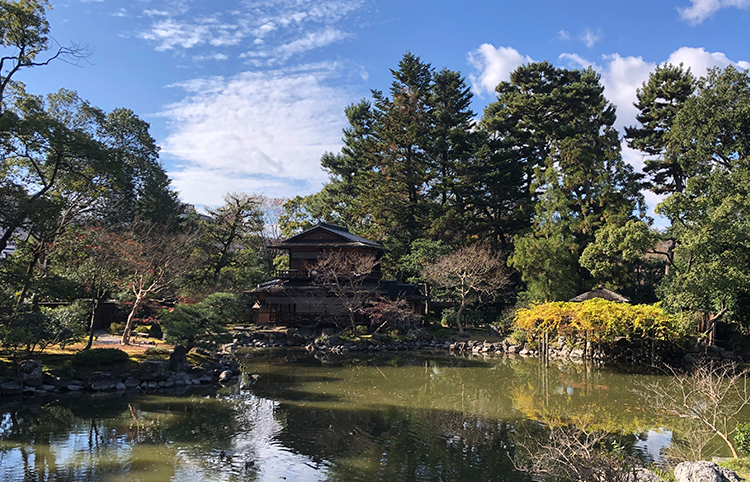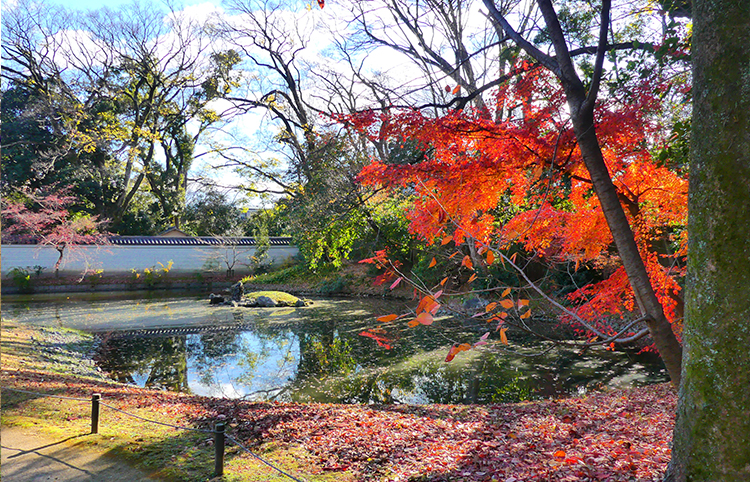Gardens full of atmosphere reveal Japanese aesthetics
In the Edo period (1603–1867) and earlier, aristocrats and senior officials who served the Imperial Court lived in residences constructed for court nobles. The garden landscape and plants of these residences are major highlights.

Garden at the site of the Konoe Residence
This place in the northwest section of Kyoto Gyoen is the site of the residence of the Konoe family, one of the five regent houses whose members served as regents or chancellors to the emperor. There are about 60 large weeping cherry trees. In Kyoto Gyoen, these are the first cherry trees to bloom, and start to pass their peak in mid-March. As the flowering season varies by plant species, such as white or red cherry blossoms, the cherry blossom season can be enjoyed for about a month.

Garden at the site of the Katsura no Miya Residence
This garden was created for the Katsura no Miya family, one of the four imperial houses. The garden, which remains in good condition, was created when the Katsura no Miya Residence became the temporary imperial palace for Emperor Komei (1831–1867) in the late Edo period (1603–1867), and can be viewed from the garden path.

Garden at the site of the Kujo Residence
This garden was created during the middle of the Edo period for the Kujo family, one of the five regent houses. The garden and the Shusui-tei Tea Ceremony House retain the atmosphere of the nobles’ residential area. The garden is now open to the public and is also used for tea ceremonies and other events.

Garden at the site of the Kan-in no Miya Residence
This garden was created in the middle of the Edo period for the Kan-in no Miya family, one of the four imperial houses. The pond in the garden has been restored to its shape at the time of its original creation.


